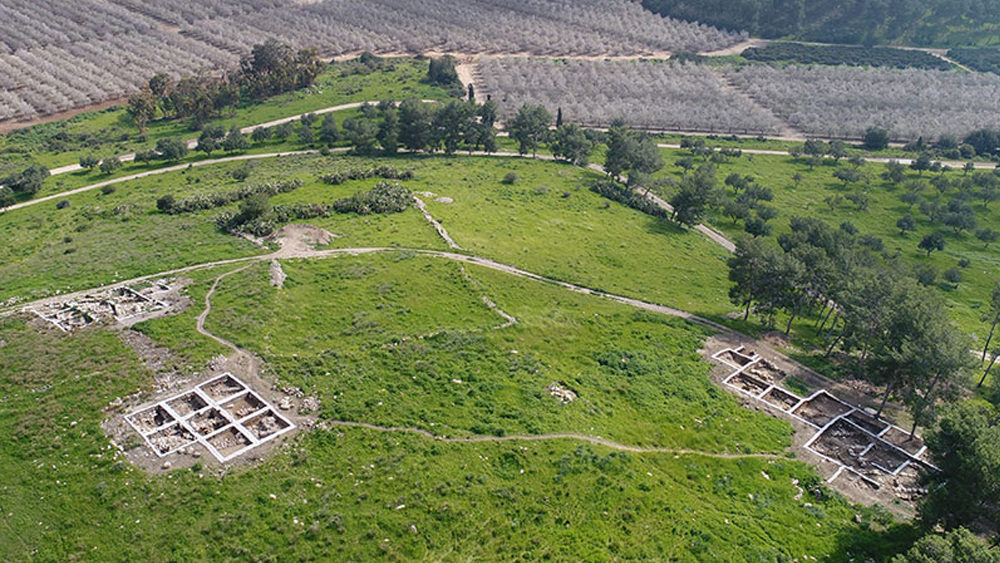Archaeologists from Australia’s Macquarie University have taken part in the discovery of another key site in the stories of the Old Testament. They have found Ziklag, the town where David found refuge while fleeing from King Saul. The Old Testament tells how he went from Ziklag to Hebron to be anointed as king (1 Chronicles 12).
“It is a smallish site, but it is proving to be extremely significant,” Kyle Keimer, Lecturer in the Archaeology and History of Ancient Israel at Macquarie University, tells Eternity from Israel.
“Biblically speaking, we are looking at the end of the book of Judges and the rise of the Israelite monarchy in the days of Saul and David, at a time when the Israelites and the Philistines were jockeying for power.”
Keimer and another Macquarie colleague, Dr Gil Davis, have been part of the excavation in co-operation with the Hebrew University and the Israel Antiquities Authority.
Another Australian link is the co-funding of the excavation by the Roth Family and Isaac Wakil, both of Sydney, along with two other funders.
Keimer explains that the excavation site – Khirbet a-Ra’i in the Judaean foothills – is “right on the border between the Philistines and the Israelites.”
“If we take the biblical text as preserving accurate details, there should be a burn level from the early tenth century identifying this site with Ziklag.” – Kyle Keimer
“It is a combination of a number of things,” Keimer explains. “Geographically the site fits – in the biblical text, unfortunately, we don’t have a huge amount to go on. From the text we know that Ziklag is south of Gath, north of Wadi Besor, and in a region where David is able to interact both with the clans of Judah and with the different nomadic groups.
“Khirbet a-Ra’I is the perfect location for all these things – about a day’s walk south of Philistine [city of] Gath, which we associate with modern-day Tell es-Safi, north of Wadi Besor. It’s right on the buffer between Philistine control to the west and and a growing Judahite presence in the east. Also, just to the south of the site, you have a massive pasture where some of these nomadic groups such as the Amalekites would have been at home.”
A second key Bible passage describes how Ziklag was raided by the Amalekites, and David’s wife Abigail and other women and children were taken captive. ( I Samuel 30.) The town was destroyed by fire, according to the Bible’s account.
“We take the the geography, with the biblical text and also the archaeology – there’s been some 11 sites proposed as Ziklag but each one has a different problem,” Keimer says. “Some of them don’t have a destruction level and, if we take the biblical text as preserving accurate details, there should be a burn level from the early tenth century.
“Khirbet a-Ra’I is the perfect location for all these things – about a day’s walk south of Philistine [city of] Gath.” Kyle Keimer
“So sites that don’t have that, there is problem there. Some sites are too far west or too far south, and wouldn’t fit with the overall picture. So the geography, the archaeology and also a broader consideration of the geo-political situation the site of Khirbet a-Ra’i is an extremely strategic location for any potential Philistine political power that wants to control the broader region – this would be the site from which to do it.”
According to the researchers, none of the other proposed sites produced continuous settlement that included both a Philistine settlement and one from the era of King David. At Khirbet a-Ra’i, however, features from both these populations have been found.
“Most of what we have uncovered over the last few seasons are the remains from the 11th century BC, but we also have a nice layer from the tenth century,” says Keimer.
“We have a sequence of monumental buildings. We have one from the 11th or maybe 12th century and we have another from the 11th century. And, in the earlier building, we have this nice cultic assemblage. That’s proved to be extremely exciting.”
Keimer also described the finding of a room with 1500 flints – evidence of a trade route.
Above the remains of the Philistine settlement was a rural settlement from the time of King David, from the early 10th century BC, according to a statement from the Israel Ministry of Foreign Affairs. This settlement came to an end in an intense fire that destroyed the buildings. Nearly 100 complete pottery vessels were found in the various rooms. These vessels are identical to those found in the contemporary fortified Judean city of Khirbet Qeiyafa – identified as biblical Sha’arayim – in the Judean foothills. Carbon 14 tests date the site at Khirbet a-Ra’i to the time of King David.
The two sites – Ziklag and Sha’arayim – are situated on the western frontier of the kingdom. They are both perched atop prominent hills, overlooking main routes passing between the land of the Philistines and Judea: Khirbet Qeiyafa in the Elah Valley sits opposite Philistine Gath, and Khirbet a-Ra’i sits opposite Ashkelon. This geographic description is echoed in King David’s Lament, in which he mourns the death of King Saul and Jonathan in their battle against the Philistines: “Tell it not in Gath, publish it not in the streets of Ashkelon.”
Email This Story
Why not send this to a friend?


